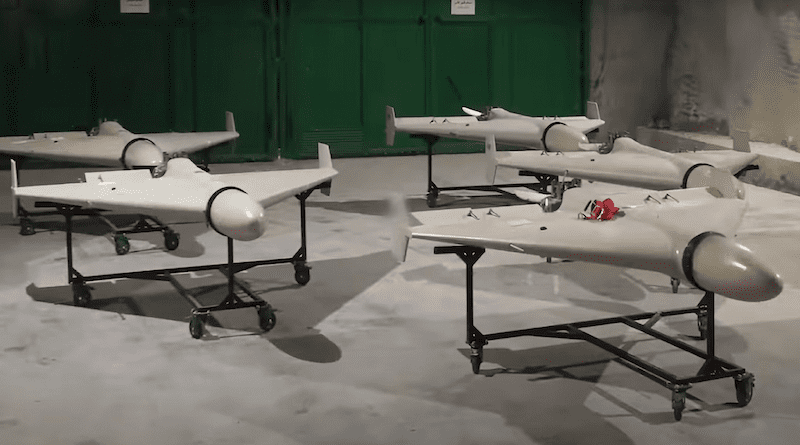Iran is working to take advantage of the chaos caused by Sudan’s civil war to gain a foothold on the Red Sea.
Establishing a presence in Sudan would, in essence, enable Iran to box in its regional opponents, including Saudi Arabia and Israel, and threaten shipping through the Suez Canal, according to experts.
“It [Iran] considers it a starting point towards achieving long term strategic gains, in terms of expansion in Africa, control of the Red Sea and wider regional influence,” analyst Abdal Monim Himmat wrote recently for The Arab Weekly. Toward that end, Iran has spent more than a year rebuilding its relations with Sudan’s leadership, which is based in Port Sudan because the Rapid Support Forces (RSF) controls most of the national capital, Khartoum.
In October 2023, Sudan and Iran resumed diplomatic ties and exchanged ambassadors after an eight-year break. Since then, Iran has supplied the Sudanese Armed Forces (SAF) with weapons to bolster its fight against the RSF.
A crucial part of those weapon shipments has been the Iran-made Mohajer-6 and Ababil drones. The drones helped the SAF defeat RSF fighters. Earlier this year, the drones played a key role in driving the RSF out of parts of Omdurman and retaking the headquarters of Sudan’s national broadcaster. Mohajer-6 drones are capable of delivering explosives.
In addition to Iranian weapons, the SAF increasingly relies on Iranian intelligence to aid its offensives against the RSF.
Observers say Iran has helped the SAF recruit and train new soldiers drawn from people displaced by the fighting who have been trained at camps in Uganda. Iran has attempted to use its aid to the SAF as leverage to get the Sudanese leadership to approve an Iranian naval base on Sudan’s coast. The country has rejected that proposal along with a later proposal for a dual-use commercial and military port at Port Sudan.
Iran’s aid has become a key component of the SAF’s effectiveness against the RSF. When the Iranian government was distracted by the death of President Sayyid Ebrahim Raisolsadati in May, the SAF’s battlefield actions suffered, according to observers.
Sudan’s connections with Iran go beyond weapons and intelligence.
“The Sudanese Army seeks to leverage Iran’s presence as a tool to pressure anti-Iran regional and international actors, encouraging them to push the RSF toward agreeing to a ceasefire on the Army’s terms,” Hani al-Aasar wrote recently for the Emirates Policy Center. The RSF gets aid from the United Arab Emirates, which, along with Saudi Arabia and other Persian Gulf countries has a tense relationship with Iran. So far, that strategy has not borne fruit, al-Aasar noted.
Ultimately, Sudan is likely to come out on the losing end of Iran’s involvement in its civil war as the Islamic Republic expands its presence in the country.
“As the Sudanese army and Iran have clearly intensified their cooperation, speculation has arisen about Sudan’s vulnerability to Tehran’s influence,” al-Aasar wrote. “The ongoing war between the Sudanese Army and the RSF has significantly eroded Sudan’s resilience against infiltration and influence by foreign powers.”
In the short term, however, the influx of Iranian weapons creates the risk that Sudan’s internal conflict will worsen and might spread beyond its borders.
“Iranian weapons in Sudan will further ignite conflicts there and in surrounding countries,” Himmat wrote. “It will turn the Red Sea into an arena for international confrontation, further complicating the security posture in region and exposing international navigation to major threats.”

